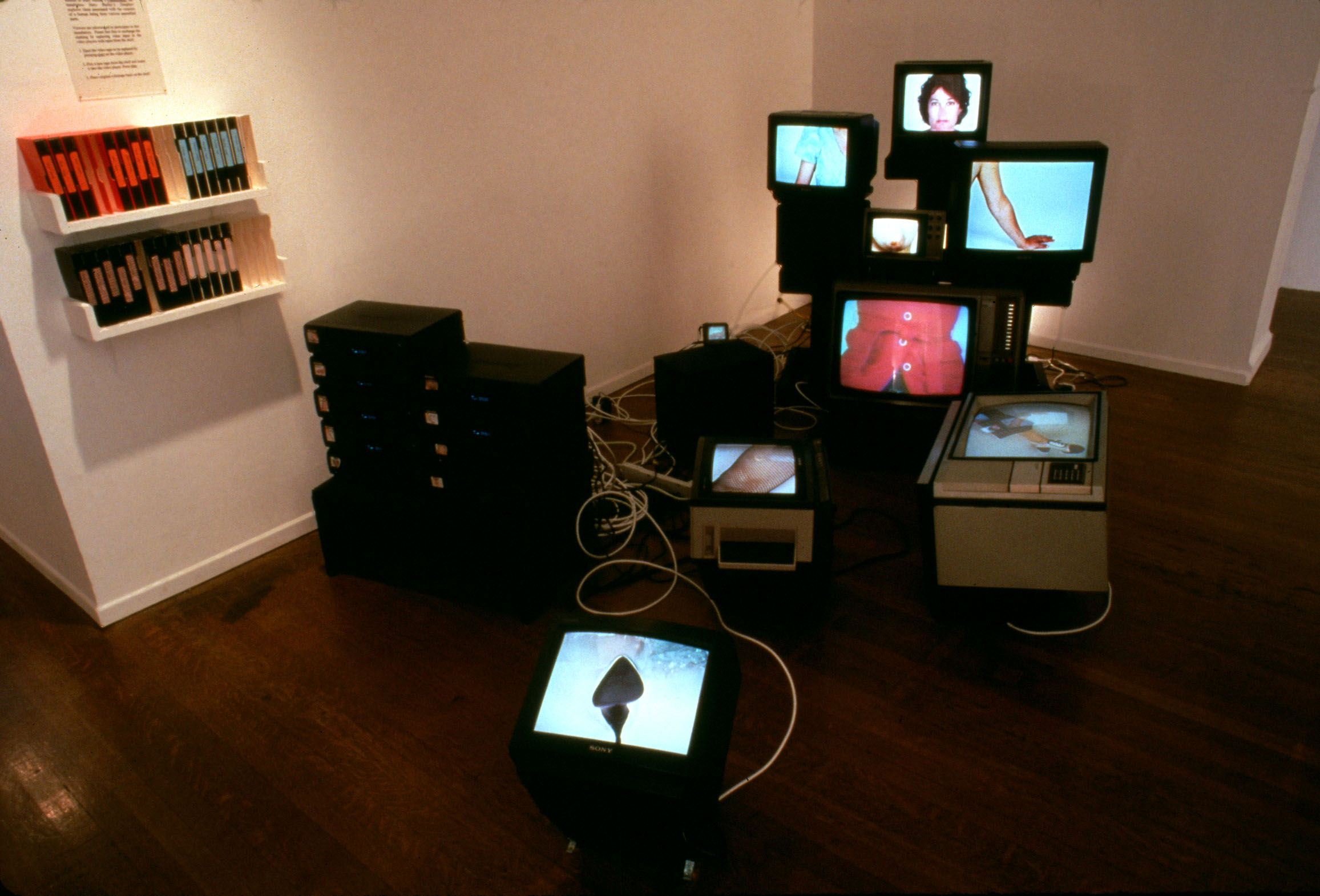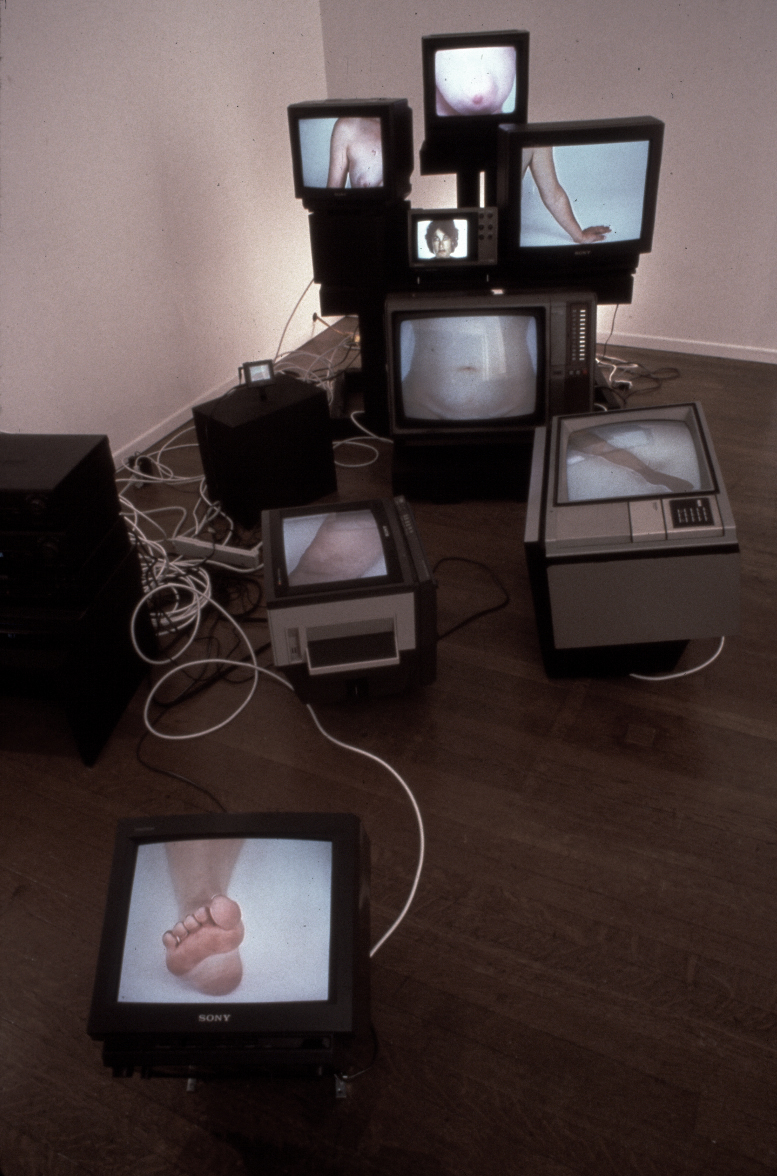

MARY SHELLEY'S DAUGHTER
For the exhibition Not Quite Myself Today : Video Works by Eight Artists at Arizona State University Art Museum in 2002, Curator John Spiak wrote:
Manipulation plays a large role in both the making of art and the art world itself. Whether through the manipulation of perspective or the alteration of reality, artists strive to change the way in which we see and think. In much the same way, outside forces often pressure artists to change their work to more easily fit into an exhibition or new art moment, to make work more commercially marketable, or even to change the medium in which they work.
In Mary Shelley's Daughter, S.E. Barnet casts the viewer in the role of creator/artist. On multiple monitors, the artist is displayed in fragmented body parts which, if pieced together, form a human figure. Museumgoers are invited to play Mary Shelley's famous character, Dr. Frankenstein, and alter the artist's real appearance by selecting imagery from multiple VHS tapes to construct their personal vision of the artist. The result of this experiment is much the same as the monster created by Shelley's Frankenstein - a conglomeration of body parts created by an individual with all the best of intentions, but perhaps without a knowledge of or appreciation for the final outcome.